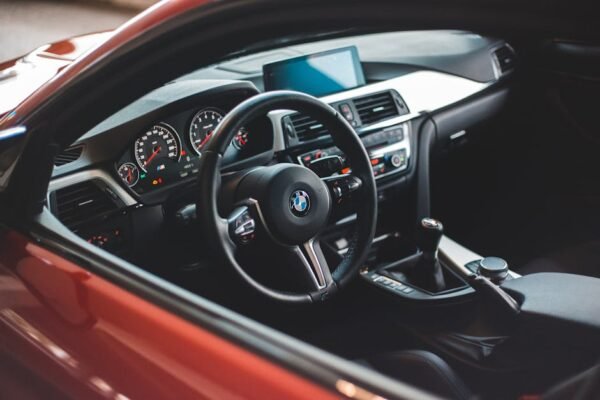The Dawn of Motoring
{“type”:”img1″,”src”:”https://mostmotors.com/wp-content/uploads/2024/03/fileUpload-44.jpg”,”alt”:”vintage automobiles”}The journey of vehicle design has been nothing short of remarkable. From the early days of horse-drawn carriages to the advent of the first automobiles, each era has left its mark on how we perceive and interact with vehicles. The inception of the automobile in the late 19th century was a defining moment, sparking an evolution that continues to this day. Early automobiles were largely experimental, focusing on basic functionality over aesthetics or comfort. It was a time of rapid innovation, with inventors and engineers pushing the boundaries of technology to create something truly revolutionary.
As time progressed, so did the designs of these early machines. Manufacturers began to recognize the importance of not just functionality, but also the aesthetic appeal and comfort of the vehicle. This led to cars with more refined shapes, improved interiors, and the introduction of features that sought to enhance the driving experience.
One of the most significant early developments was the introduction of the assembly line by Henry Ford. This wasn't just a leap forward in manufacturing efficiency; it drastically reduced the cost of production, making cars more accessible to the average person. The Model T, in particular, stands as a testament to the impact of this innovation, symbolizing the democratization of vehicle ownership and setting a new standard for vehicle design and production.
The inter-war years brought about further advancements. Designers began to experiment with aerodynamics, leading to sleeker, more streamlined models that boasted better performance and efficiency. This era also saw the introduction of luxury cars, vehicles that offered superior comfort, performance, and elegance, catering to a more affluent segment of society. The importance of vehicle design as a reflection of personal status and identity began to take shape during this period.
World War II had a profound impact on vehicle design. The need for durable, reliable, and efficient vehicles for military use drove innovation in engineering and manufacturing practices. Post-war, these advancements trickled down into civilian vehicles, leading to improvements in reliability, performance, and fuel efficiency. This period also saw the birth of the sports car, vehicles designed for performance and handling rather than just transportation. The post-war era marked a turning point, where vehicle design began to focus as much on performance and innovation as on utility.
The Space Age Influence
The 1950s and 60s, often referred to as the Space Age, brought a futuristic vision to vehicle design. Influenced by the excitement surrounding space exploration, cars started to feature more futuristic designs with tail fins, bubble tops, and an overall aesthetic that mimicked rockets and space crafts. This era pushed the boundaries of creativity in design, resulting in some of the most iconic and recognizable cars in history.
During this time, safety began to emerge as a critical component of vehicle design. Innovations such as seat belts, crumple zones, and later, airbags, started to become standard features. These developments highlighted a growing understanding of the importance of safety in design, an aspect that continues to drive vehicle development today.
The oil crisis of the 1970s led to a shift in priorities, with fuel efficiency becoming a major focus. This period forced designers to re-evaluate vehicle size, weight, and aerodynamics, leading to the introduction of compact and subcompact cars. These models were designed to be more fuel-efficient, marking a significant shift from the large, powerful cars of the previous era. It was a time of considerable change, reflecting broader societal shifts towards environmental consciousness and sustainability.
The advent of computer-aided design (CAD) technologies in the late 20th century revolutionized vehicle design. For the first time, designers had powerful tools at their fingertips that allowed for greater precision, experimentation, and innovation. This era saw the introduction of features that significantly improved safety, performance, and comfort, including anti-lock braking systems (ABS), traction control, and advanced suspension systems. The use of CAD technologies opened up new possibilities in vehicle design, enabling more complex and refined shapes, as well as the integration of new materials and construction techniques.
The Modern Paradigm Shift
{“type”:”img1″,”src”:”https://mostmotors.com/wp-content/uploads/2024/03/fileUpload-45.jpg”,”alt”:”modern electric cars”}The 21st century has been characterized by a significant paradigm shift in vehicle design, largely driven by the advent of electric vehicles (EVs) and autonomous driving technologies. The rise of EVs has necessitated a rethinking of vehicle architecture, from the placement of batteries to the design of the interior space. This shift represents not just a technological evolution, but a reimagination of what a vehicle can be.
Today's designs emphasize sustainability, with a focus on reducing emissions and improving energy efficiency. The introduction of lightweight materials, advanced aerodynamics, and electrification are central to this effort. As autonomous driving technologies continue to develop, we are also seeing changes in interior design, with a greater emphasis on comfort and connectivity.
Moreover, the digital transformation of vehicles is underway. With the integration of Internet of Things (IoT) technologies, cars are becoming more connected, capable of communicating with other vehicles and infrastructure to improve safety and efficiency. This digital revolution is redefining the vehicle as not just a mode of transport, but a connected device that is an integral part of our digital lives.
The evolution of vehicle design is a testament to human ingenuity and the relentless pursuit of innovation. Each era has brought its own challenges and opportunities, shaping the vehicles we drive in profound ways. As we look to the future, it is clear that the journey of vehicle design is far from over. With continued advancements in technology and a growing emphasis on sustainability and connectivity, the vehicles of tomorrow promise to be even more efficient, safe, and exciting.





